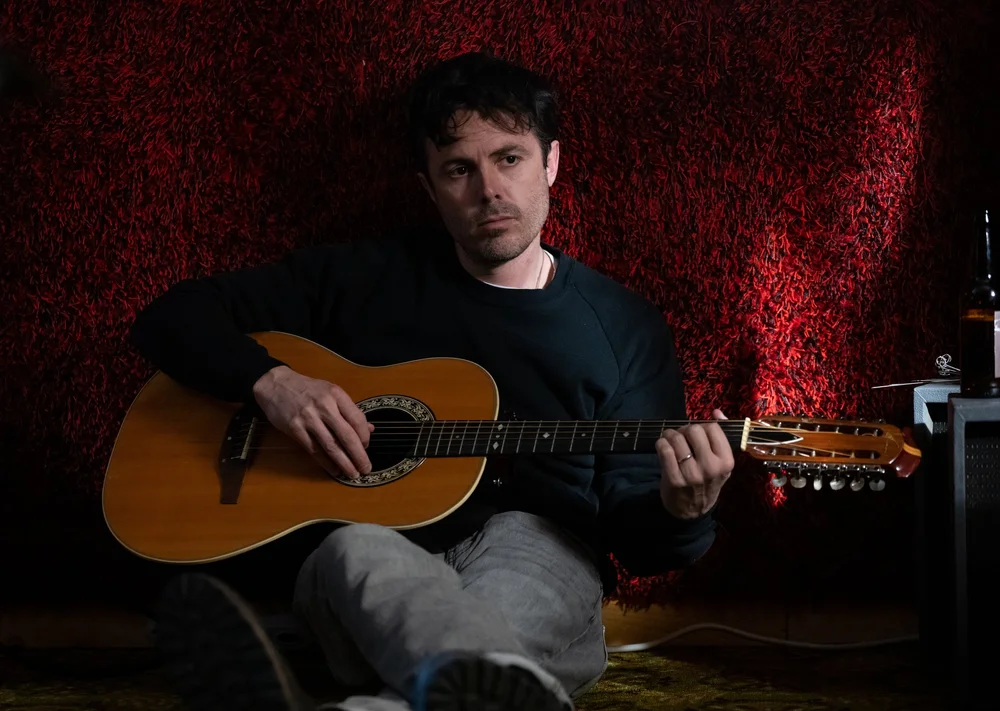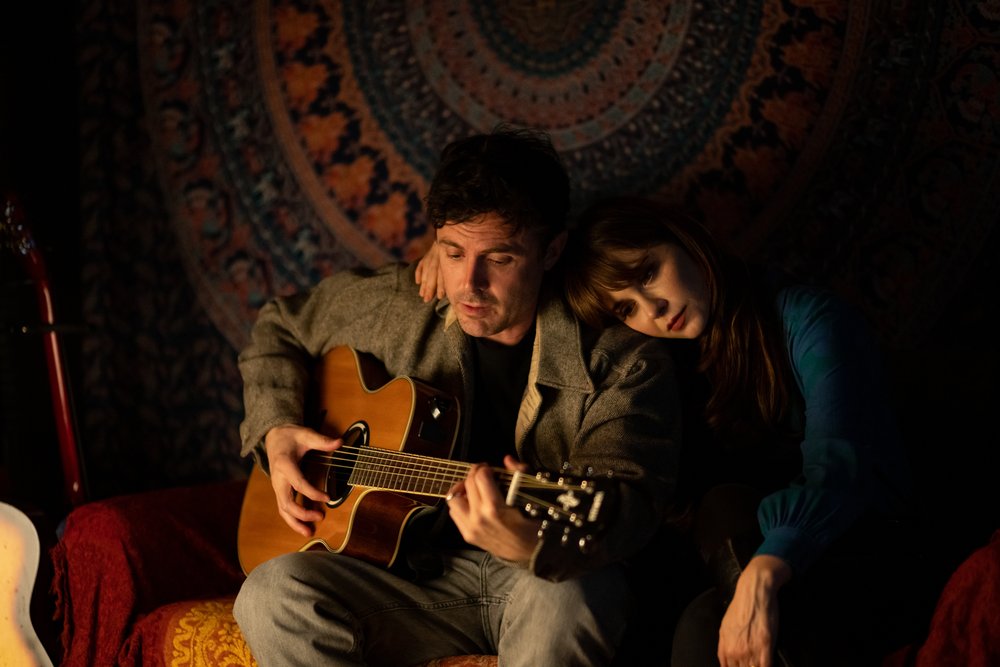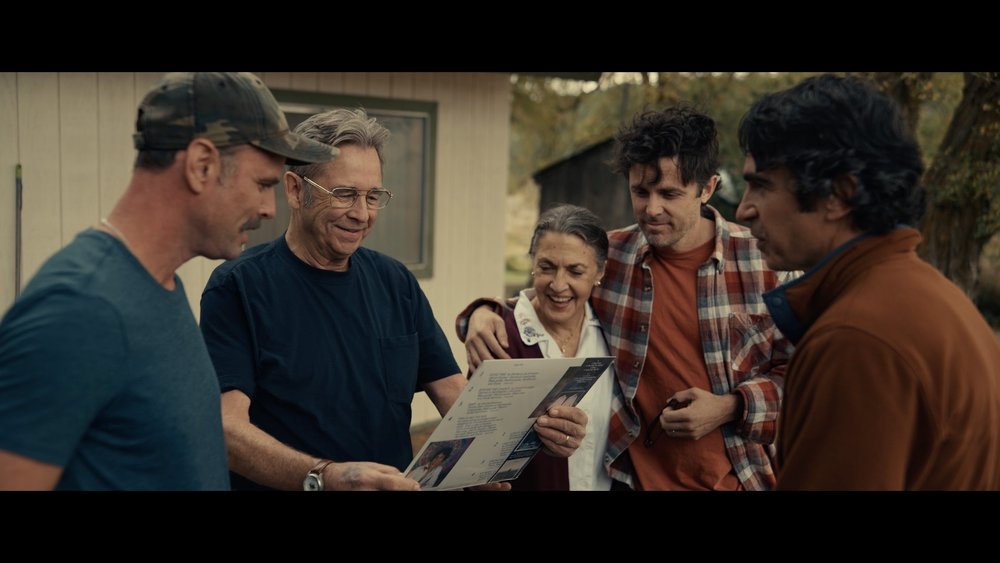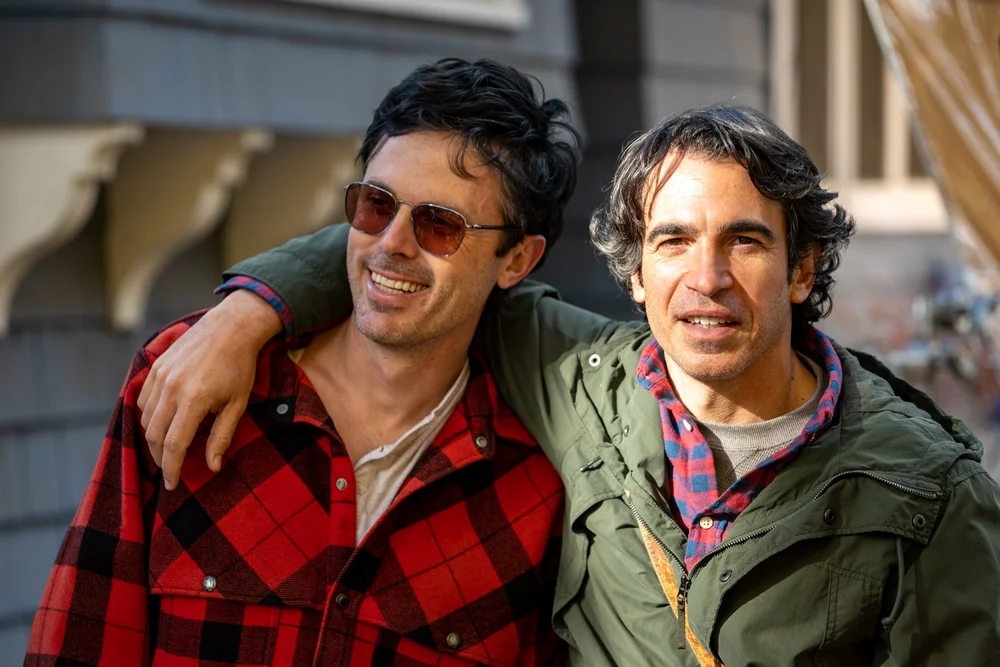
Image courtesy of Roadside Attractions
DREAMIN’ WILD– 4 STARS
This may be an extreme distillation for Dreamin’ Wild, but the art on display– both the movie and the music history it’s based on– seeks two outcomes above all others. The first is to impress an audience. The people making the art are showing off their talent and want it to be seen, heard, or experienced. Moreover, they thrive from the praise and rewards their efforts can receive.
LESSON #1: IMPRESSING FELLOW ARTISTS– One of the highest forms of such praise is that which comes from fellow artists. Today, the youngins will call it “game recognizing game.” After encountering the 1979 album Dreamin’ Wild, Beach Boys co-founder Brian Wilson called the songs of Donnie and Joe Emerson a “dream-like symphony to teenhood.” Coming from a musical virtuoso like him, peer-to-peer respect does not get much better.
Wilson’s single quote alone might just sell the Dreamin’ Wild movie all by itself for lovers of musical biopics. Yet, the immediate question is what kind of song lyrics and music could have evoked praise and regard like that from a legend like Brian Wilson. You avidly want to hear and absorb whatever it is for yourself. That’s when reflection and realization of the second cardinal outcome needs to come into play.
LESSON #2: THE DESIRE TO POUR YOUR HEART OUT THROUGH ART– Before a song is ever recorded, it has a genesis from a mind and a heart. From toe-tapping diddies to yearning ballads, every song comes from a desire to pour both out. The creative process is a release of personal expression for the artist. If more people hear the result afterwards, that’s all a bonus, but it’s still something that has to come out, one way or another. Dreamin’ Wild genuflects with humble reverence to a true story that achieved both of those two chief artistic outcomes later than they should have, yet still right on time.
In 1979, at the tender ages of 15 and 17, the Emerson brothers (played by Noah Jupe of A Quiet Place and Jack Dylan Grazer of Shazam!)– working out of a tricked-out DIY studio built by their father (a wonderfully sage Beau Bridges) on his farm property in Fruitland, Washington– took an expensive chance to realize their untainted rockstar aspirations. From cutting tracks and shooting their own cover art, the family self-produced and self-promoted their boys’ first album Dreamin’ Wild. Led by the soulful ballad “Baby,” the record presented a homegrown blend of blues, funk, country, and folk in eight original songs all written by Donnie Emerson.
Against the family’s high confidence, Dreamin’ Wild flashed tremendous potential but did not take off beyond 2,000 pressings in their rural sliver of The Evergreen State. Through the 80s and 90s, Donnie continued pursuing a musical career in Los Angeles and pushed out a few albums of solo work, while Joe stayed home. Decades passed. Boys grew up. Memory faded and reality kicked in.
By the 21st century, Joe, now played by Justified’s Walton Goggins, is an unmarried blue collar worker like his father who hasn’t drummed in years. Meanwhile, Manchester by the Sea Academy Award winner Casey Affleck embodies Donnie. He is seen making ends meet running a sputtering recording studio in Spokane and collecting gig checks as an overqualified reception singer and open-mic regular with his equally music-inclined wife Nancy (a perfectly-cast Zooey Deschanel). Putting food on the table and paying bills has long replaced rockstar dreams.
LESSON #3: CULTURE BEING REDISCOVERED– The fate of the Emerson brothers changed in 2008 when a prominent record collector found a copy of 1979’s Dreamin’ Wild at a Spokane antique shop. The album was passed around underground music circles and gained online buzz. Through each layer of rediscovery, it drew more and more equally captivated fans, including Light in the Attic Records founder Matt Sullivan (Air’s Chris Messina), who traveled to Fruitland to meet the Emerson family personally. His goal was gaining their blessing to remaster and re-release the album wider than before and share their incredible story to wider audiences.
LESSON #4: ACCEPTING YOUR ABANDONED DREAMS– It’s at this point that Dreamin’ Wild deftly expresses the tangible difficulties that resulted from the gravity of such personal and artistic providence. The fresh-faced and wide-eyed boys that created those songs aged to become men beaten down by repetitive failure. Especially for Donnie, who carried the old flicker of a starving artist longer than anyone else, the happenstance swerve of having his dreams finally noticed– let alone realized greater than he ever thought possible– scares him and his jaded trust. Nonetheless, his journey is to accept the returned inspiration and savor the earned moments, especially when he never thought they would ever come.
Dreamin’ Wild comports itself unlike many other musical biopics. This one is not trying to strap a rocket to the back of its subjects and launch them to superstar heavens in front of massive crowds shining a barrage of spotlights and flashbulbs. That’s not the Emersons’ story whatsoever. As hinted at before, these songs, characterized, again, as a “dream-like symphony to teenhood,” came from an emotional place beyond what was captured on vinyl. Fragile care was needed. Focusing on that heartspace, this film leans strongly on an intimate level of familial drama and the dedicated effort it took for the Emersons to even put themselves out there; then and now.
In portraying two parts of Donnie Emerson’s (the real man and his family close out the end of the film) past, both Noah Jupe and Casey Affleck wonderfully tap into a fragile-yet-hopeful heart from opposite directions. Jupe’s projection of shrinking innocence is a fair distance away from Affleck’s sullen, weathered spirit. Employing well-stitched flashbacks and idyllic incandescent cinematography from Arnaud Potier (Breathe), Dreamin’ Wild hops back and forth to show their development. Where those wavelengths meet, is through the music when souls are laid bare and the longing comes out. “Baby” will flutter and demolish your conscience, just as it did for Brian Wilson.
As fate would have it, Dreamin’ Wild was written and directed by Bill Pohlad in his first directorial effort since he (and we, shortly thereafter) bowed at the altar of Brian Wilson with the superb Love and Mercy from 2015. Wouldn’t you know it, it took someone with an intellect and a soft spot for artists to capture such an intimate and inspirational story like Dreamin’ Wild. Paint those parallels because Pohlad has done it again with another richly introspective, atypical, and homely biopic. Matching Love and Mercy, Dreamin’ Wild celebrates private victories of redemption with a higher focus of importance than any adjacent public victories of fandom and popularity. Pohlad knew what mattered most, and this is a chance to applaud both the subjects and the filmmaker with equal respect and enthusiasm.




LOGO DESIGNED BY MEENTS ILLUSTRATED (#1139)
from Review Blog https://ift.tt/AoJqVgm







No comments:
Post a Comment